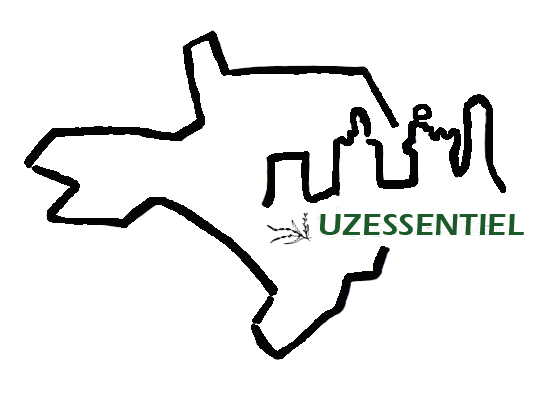A walk in Saint-Gilles
Around 50 kms from Uzès and just over 20 kms from Nîmes, the town is named after the itinerant Greek monk Gilles the Hermit (Aegidius), sanctified by the Benedictines in the 8th century.

|
Invoked to cure illnesses, pilgrims also pray to Saint-Gilles for the release of prisoners...
|

The first place to visit is the abbey church of Saint-Gilles. Following the restoration work undertaken in 2017, we are delighted with the museography, which highlights the archaeological remains of the former monastery, the cloister in particular, the crypt housing the tomb of Saint-Gilles, the bishops' access ramp to the upper level and, above all, the facade, originally polychrome, which has been a National heritage since 1998 for being " a stopover on the pilgrimage route to Santiago de Compostela".
The view of the church from the renewed Place de la République is superb, allowing to appreciate its decoration, well chiselled into the stone.
Its three monumental doors are framed by the 12 apostles and archangels. On the upper frieze, "scenes from the New Testament depict episodes from Holy Week and Easter", and the base is decorated with several images of evil and the devil, as well as the angel's call to David, the offerings of Abel and Cain, the prophet Balaam, Samson...*.
Saint-Gilles has been an important pilgrimage centre since the 12th century, at the end of the Regordane Way.
It remains so, as shows the statue dedicated to pilgrims in the nave of the abbey church and the nearby Maison du Pèlerin (Pilgrim's house).
Looked over by the association Accueil et Tradition St Gilles/St Jacques, the house is the first stop on the pilgrims' route to Santiago de Compostela.
Good to know: The credencial (pilgrim's passport) is compulsory in this accommodation, which is intended solely for pilgrims. "In the past, bishops issued pilgrims with a certificate allowing them to travel and authenticating their status as pilgrims. Today, the credencial (issued by associations) and the creanciale (issued by the Church) are the heirs to this tradition. They are issued to walkers, cyclists and horse riders on their way to Compostela".
|
Also known as the Chemin de Saint-Gilles, the route links Le Puy-en-Velay in the Haute-Loire to the town of Saint-Gilles in the Camargue... 10 days of hiking over 240 km, with passes that are more accessible and easier than Stevenson's route, culminating at an altitude of 1,200 m.**
|
 While the beautiful 12th-century abbey church has benefited from a renovation campaign, the town itself has also benefited from a restoration plan, highlighting its many monuments.
While the beautiful 12th-century abbey church has benefited from a renovation campaign, the town itself has also benefited from a restoration plan, highlighting its many monuments.
In addition to the abbey church, which has been listed National heritage since 1840, there is the Romanesque house in the historic centre, just a stone's throw away.
Dating from the 12th century, it "belonged to the Italian family of Guy Foulques, Fucoldi, troubadour, jurist and Pope in Rome from 1265 to 1268, under the name of Clement IV·, it has been restored in the 19th century.
Tt houses 3 museums: the Natural History Museum, an archaeological collection since the 1950s and a regional ethnography museum since the 1980s.
Another National heritage monument since 1862 is the Château d'Espeyran, 5 km from Saint-Gilles, listed since 2009...
Its 13 hectares of parkland is one of its greatest assets. But that's not all. There's also a 7-hectare archaeological reserve and "the Centre National du Microfilm et de la Numérisation (National Microfilm and Digitisation Centre), which occupies an original and special place in the French archive network, as it is the only centre dedicated to the conservation of microfilm and digital backup media "***.


Saint-Gilles also has a rich and varied gastronomic heritage, starting with its wines, which have been highly prized since the 14th century. Today, it's the Costières-de-Nîmes appellation that attracts the attention of wine-lovers. Did you know that the region's grape variety, mourvèdre, is also known as plant de Saint-Gilles? There's also the Camarge rice, olive oil and the famous brave bulls ... ****
The coat of arms: Azure, a doe recumbent Or, forelegs bent, head contourned and wounded with an arrow of the same in bar.
Sources : *Notice de visite L'abbatiale de Saint-Gilles, ** Cévennes-tourisme.uk, ***Château d'Espeyran, **** wikipedia,
The right address: Maison des pèlerins, 3 impasse du Cloître, Saint-Gilles. Agence française des Chemins de Compostelle. Musée de la Maison Romane, Place de la Maison Romane, Saint-Gilles. Château d'Espeyran, Chemin d'Espeyran, Saint-Gilles.





